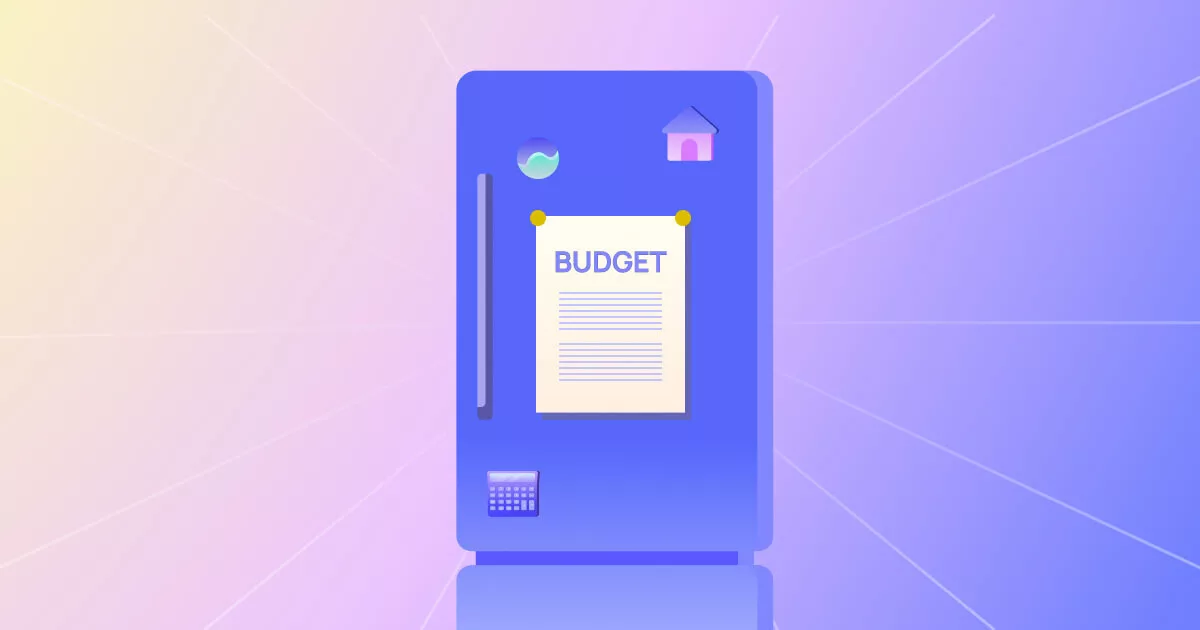
Are you tired of constantly stressing about your finances? Living paycheck to paycheck? Or maybe you just want to get a better handle on your money? Well, you’re in the right place because we’re going to show you how to build a household budget in seven simple steps!
We know that budgeting can seem overwhelming, but trust us, it’s worth it. Having a budget can help you save money, pay off debt, and achieve your financial goals. And the best part? It doesn’t have to be complicated. So let’s dive right in.
7 Steps to Creating a Monthly Household Budget
1. Set goals
Setting financial goals involves identifying what’s important to you, making your goals specific and measurable, setting realistic goals, breaking down big goals into smaller ones, and creating a plan for achieving them. It’s important to challenge yourself and also set achievable goals. Financial goals are personal and can vary depending on a person’s priorities.
Common examples include paying off debt, building an emergency fund, saving for retirement, making a down payment on a house, creating a budget, increasing income, and building a college fund. It’s important to identify your own goals and create a plan to achieve them. By setting specific goals, breaking them down into smaller steps, and creating a plan, you can work towards achieving financial stability and security.
2. Determine your monthly income
To determine your monthly income, you’ll need to start by calculating your gross income. This is the amount of money you earn before any taxes or deductions are taken out of your paycheck. If you receive a salary, your gross income will be your annual salary divided by 12. If you are paid hourly, you’ll need to multiply your hourly wage by the number of hours you work each week and then multiply that by 4 to get your monthly income.
Next, you’ll need to calculate any additional income you receive, such as bonuses or commissions. If you receive any income from investments, rental properties, or other sources, you’ll need to include that in your total income as well. Once you have all of your sources of income added up, you’ll have your total monthly income. This number is important in creating a budget and can help you better manage your finances.
3. List your monthly expenses and categorize them
Listing your monthly expenses is an important step in creating a budget and managing your money. It’s basically making a list of all the things you spend money on each month. Here are the steps to follow:
- Make a list of all your bills. This includes things like rent/mortgage, utilities, phone bill, internet bill, car payments, and any other bills you pay regularly.
- List your monthly subscriptions. This includes things like Netflix, Spotify, or any other subscriptions you pay for on a monthly basis.
- List your daily expenses. This includes things like groceries, gas, entertainment, dining out, and anything else you spend money on regularly.
- Don’t forget about occasional expenses. This includes things like car repairs, medical expenses, gifts, and other occasional expenses that you might not pay every month but you should still account for in your budget.
Once you have all of your expenses listed, you can add up the total to see how much you’re spending each month. This will give you a good idea of where your money is going and can help you identify areas where you might be overspending. Remember, it’s important to be honest and accurate when listing your expenses so that your budget reflects your actual spending habits.
4. Separate your needs from your wants
To separate needs from wants, it’s important to ask yourself whether a particular expense is necessary for your basic needs or simply something you desire. Needs are essential items that are required to live, such as food, shelter, and basic clothing. Wants, on the other hand, are things that are not essential but are desired, such as a luxury car or designer clothing.
It’s important to prioritize your needs over your wants to ensure that you are meeting your basic living requirements before indulging in discretionary spending. For example, buying groceries is a need, while buying an expensive pair of shoes is a want. By understanding the difference between needs and wants, you can make better financial decisions and ensure that you are meeting your basic needs first.
5. Assign amounts to each category
To assign amounts to each category in your budget, you need to determine how much you can afford to spend on each category. Start by prioritizing your needs, such as housing, utilities, and food, and allocate a portion of your income towards those expenses. Next, consider your wants and set a limit for each category, such as dining out or entertainment. For example, you may allocate $200 per month for dining out and $100 per month for entertainment.
Finally, set aside money for emergency savings, aiming for 3-6 months of living expenses. For example, if your monthly expenses are $3,000, you would aim to save $9,000-$18,000 in emergency savings. By assigning specific amounts to each category, you can create a budget that reflects your priorities and helps you manage your money more effectively.
6. Put your plan into action
Putting your budget into action involves a combination of strategies to help you manage your money effectively. The first step is to regularly track your spending and ensure that you are staying within your budget. This may involve using a spreadsheet or a budgeting app to monitor your expenses and adjust your spending as needed. It’s also important to automate your savings and bill payments to ensure that you are meeting your financial goals and paying your bills on time. This can include setting up automatic transfers to your savings account or scheduling payments for bills that recur each month.
To further improve your budgeting, you can look for ways to reduce your expenses. This can include finding discounts or negotiating bills to reduce your overall expenses. Additionally, it’s important to stay motivated and remember your financial goals, whether that’s paying off debt or saving for a down payment on a house. By taking action and implementing your budget, you can achieve financial stability and feel confident in your ability to manage your money effectively.
7. Adjust your budget as needed
Adjusting your budget is an important part of managing your finances effectively. There are many reasons why you may need to make changes to your budget, such as a change in income or unexpected expenses. To adjust your budget, start by reviewing your spending and income to identify areas where you can make changes. For example, you may need to reduce your entertainment or dining out expenses to free up more money for other expenses, or you may need to find ways to increase your income, such as taking on a side job or negotiating a raise at work.
One area where many people overspend is subscriptions, such as streaming services, gym memberships, or meal delivery services. To adjust your budget, review your subscriptions and consider canceling or reducing those that you no longer use or need. For example, if you signed up for a monthly subscription to a meal delivery service but find that you’re not using it as often as you thought, consider canceling it or reducing the frequency of your deliveries to save money.
In addition to subscriptions, other areas where you may need to adjust your budget include housing, transportation, and groceries. Look for ways to reduce your expenses in each category, such as carpooling to work or shopping for groceries in bulk. By adjusting your budget as needed, you can stay on track to meet your financial goals and maintain control over your finances.
Conclusion
In today’s fast-paced world, managing your finances has become more important than ever. Creating a household budget is a vital step towards achieving financial stability and reaching your financial goals. While the process of budgeting may seem overwhelming, it can be simplified by following the 7 steps outlined in this blog.
Remember, a well-planned budget is not just about cutting back on expenses, but it’s also about creating a realistic financial plan that can help you achieve your financial goals. Whether you’re saving for a down payment on a house, paying off student loans, or simply building an emergency fund, a household budget can help you get there. With these steps in mind, you can take control of your finances and start working towards a brighter financial future.
FAQs
1. How do you use the 50/20/30 budgeting rule?
The 50/20/30 budgeting rule is a guideline for budgeting that suggests allocating 50% of your income towards needs, 20% towards savings and debt repayment, and 30% towards wants. This approach can help you prioritize your expenses and create a budget that works for your financial goals.
2. What will happen if the budget is not met?
Not meeting a budget can cause financial instability, put you into debt, hinder progress toward financial goals and potentially cause overspending in other categories. Regularly reviewing and adjusting your budget is important to stay on track and avoid overspending.
3. Can you live without a budget?
Yes, it is possible to live without a budget, but it can make it difficult to achieve financial goals, track expenses, and manage money effectively. A budget provides a clear picture of income and expenses, and helps prioritize spending, ultimately leading to better financial stability and planning.





